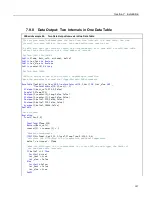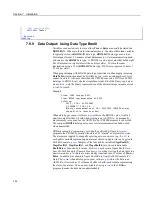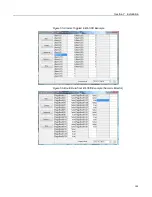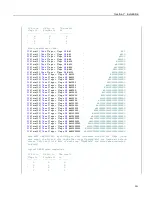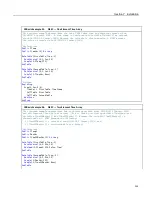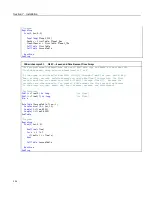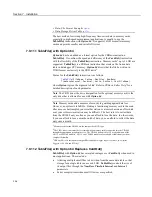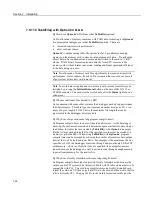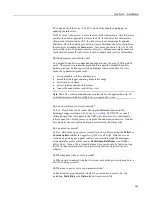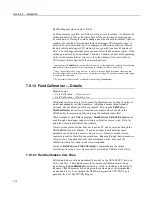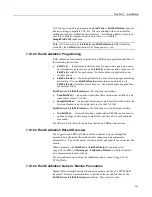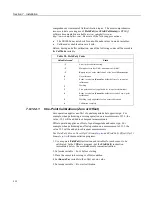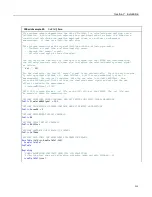
Section 7. Installation
PC to update the info sector. The PC is much faster than the datalogger at
updating the info sector.
FAT32 uses an “info sector” to store the free cluster information. This info sector
prevents the need to repeatedly traverse the FAT for the bytes free information.
After a card is formatted by a PC, the info sector is not automatically updated.
Therefore, when the datalogger boots up, it must determine the bytes available on
the card prior to loading the
Status
table. Traversing the entire FAT of a 16 GB
card can take up to 30 minutes or more. However, subsequent compile times are
much shorter because the info sector is used to update the bytes free information.
Q:
Which memory card should I use?
A:
Campbell Scientific recommends and supports only the use of FMJ brand CF
cards. These cards are industrial-grade and have passed Campbell Scientific
hardware testing. Following are listed advantages these cards have over less
expensive commercial-grade cards:
•
less susceptible to failure and data loss
•
match the datalogger operating temperature range
•
faster read/write times
•
better vibration and shock resistance
•
longer life spans (more read/write cycles)
Note
More CF card recommendations are presented in the application note,
CF
Card Information
, which is available at
www.campbellsci.com
.
Q:
Can closed files be retrieved remotely?
A:
Yes. Closed files can be retrieved using the
Retrieve
function in the
datalogger support software
File Control
(p. 515)
utility, FTP, HTTP, or e-mail.
Although open files will appear in the CRD: drive directory, do not attempt to
retrieve open files. Doing so may corrupt the file and result in data loss. Smaller
files typically transmit more quickly and more reliably than large files.
Q:
Can data be accessed?
A:
Yes. Data in the open or most recent file can be collected using the
Collect
or
Custom Collect
utilities in
LoggerNet
,
PC400
, or
RTDAQ
. Data can also be
viewed using datalogger support software or accessed through the datalogger
using data table access syntax such as
TableName.FieldName
(see
CRBasic
Editor Help
). Once a file is closed, data can be accessed only by first retrieving
the file, as discussed previously, and processing the file using
CardConvert
software.
Q:
What happens when a card is inserted?
A:
When a card is inserted, whether it is a new card or the previously used card, a
new file is always created.
Q:
What does a power cycle or program restart do?
A:
Each time the program starts, whether by user control, power cycle, or a
watchdog,
TableFile()
with
Option 64
will create a new file.
209
Summary of Contents for CR1000
Page 2: ......
Page 4: ......
Page 6: ......
Page 32: ......
Page 36: ......
Page 38: ......
Page 40: ......
Page 60: ...Section 4 System Quickstart Figure 16 PC200W View Line Graph 60 ...
Page 96: ......
Page 98: ...98 ...
Page 302: ......
Page 453: ...Section 8 Operation Figure 115 Using the Keyboard Display 453 ...
Page 456: ...Section 8 Operation Figure 118 Real Time Custom 456 ...
Page 457: ...Section 8 Operation 8 8 1 3 Final Memory Tables Figure 119 Final Memory Tables 457 ...
Page 458: ...Section 8 Operation 8 8 2 Run Stop Program Figure 120 Run Stop Program 458 ...
Page 460: ...Section 8 Operation Figure 122 File Edit 460 ...
Page 461: ...Section 8 Operation 8 8 4 PCCard Memory Card Display Figure 123 PCCard CF Card Display 461 ...
Page 478: ......
Page 506: ......
Page 536: ......
Page 636: ......
Page 642: ......
Page 644: ......
Page 676: ......
Page 677: ......



